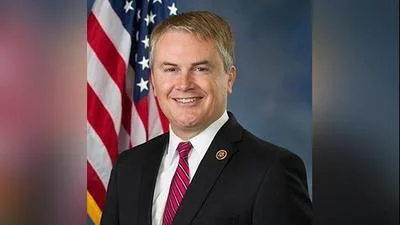Energy and Commerce Chairman Frank Pallone, Jr. (D-NJ) delivered the following opening remarks today at a Health Subcommittee hearing titled, “ARPA-H: The Next Frontier of Biomedical Research:”
Today the Committee will examine the Biden Administration’s proposal to establish the Advanced Research Projects Agency for Health or ARPA-H, and how this proposal could enhance the landscape of biomedical research.
There is a lot of excitement for ARPA-H. Patient groups, academia, industry, and many others have voiced their support of this novel model to catalyze society-changing medical breakthroughs.
Imagine a world with cancer-curing vaccines, no overdose deaths, genetic tests to detect and actually prevent illness, and a truly equitable health delivery system. It is hard to imagine at this point, but the possibilities with ARPA-H are endless.
Today, America’s existing biomedical research ecosystem is the best in the world. It is supported by the best universities, companies, and scientists.
But there are still gaps and missed opportunities. Fundamental research, conducted by universities, nonprofits and government agencies, requires a high degree of scrutiny in order to produce strong and objective knowledge. Once fundamental knowledge is established, translational science within the commercial sector takes over to develop cures, treatments, and technologies that address patient needs.
This process involves a degree of risk that oftentimes stands in the way of making lifesaving discoveries. Some of the risk factors include cost and recruitment for clinical trials, scalability, regulatory pathways, and the question of profit. At the end of the day, the priorities of the academic and commercial sectors may result in ideas simply not being pursued that are considered too high-risk, have a significant cost, or where the potential commercial market would not support the cost.
Advanced research agencies like the Defense Advanced Research Projects Agency or DARPA have addressed these gaps. DARPA has done this by building on established fundamental research and funding time-limited, milestone-based translational research. This high-risk, high-reward model allows the defense research ecosystem to understand what works and what does not without spending decades of resources on trial and error.
As a result, DARPA has developed platform technologies that have changed the world – technologies that we use every day, including cell phones, the internet, flat-screen displays, and Global Positioning Systems. DARPA is part of the Department of Defense, and importantly it, has not supplanted any function of the Department’s vast structure because its mission is unique and specific.
The same is true for ARPA-H. Its mission is to make pivotal investments in breakthrough technologies that cannot readily be accomplished through traditional research and commercial activity. I look forward to hearing from our panel of expert witnesses who have decades of experience in academia, fundamental research, federal public health agencies, and DARPA to discuss the mission, structure, authority, timing, and funding of ARPA-H.
Although this is not a legislative hearing, appropriators have introduced legislation that would fund ARPA-H at $3 billion in the House and $2.4 billion in the Senate. That funding is contingent on this Subcommittee writing and passing authorizing legislation. There are two existing proposals that would do so, one introduced by Chairwoman Eshoo and the other introduced by Representative DeGette. I thank you both for your outstanding leadership on this important issue.
This Subcommittee has a strong, bipartisan history of supporting federal biomedical research. The proposal for ARPA-H is another opportunity for us to work together and establish an agency that will have a direct impact on fundamental research, breakthrough technologies, and healthier patient outcomes.
Thank you.









